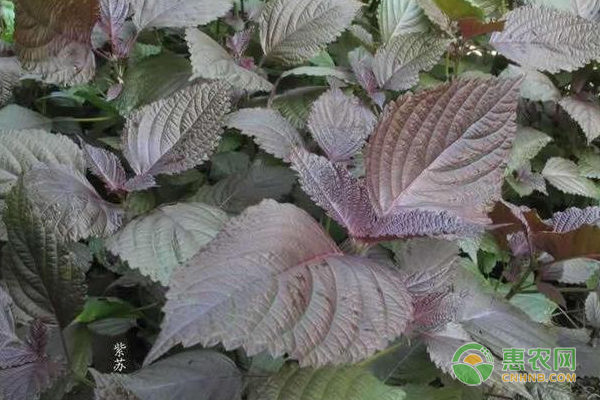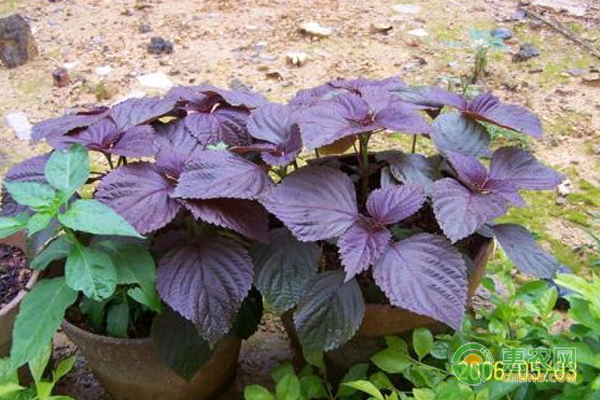Perilla is a flavoring agent. It has strong adaptability to the climate, is cold-tolerant, and has a relatively humid growing environment. Commonly used dishes in daily life include perilla cucumber, perilla snail, etc., and are popular among people. The following is a small series combined with their own. Know the knowledge of the breeding method and cultivation points of Perilla!
Perilla has a weak soil requirement. It is produced in a warmer climate, in well-drained sandy loam, and in neutral soil.

1. Seed storage and treatment: The seed dormancy period is up to 120 days. The newly harvested seeds should break the dormancy period. The seeds must be placed in a 3 degree Celsius environment for 5 days, and germinated by gibberellin to promote germination. Seed germination is required for light. The harvested seeds should not be stored dry. It should be placed in a cool place for 2-3 days. After mixing with the seeds of the river sand with equal water, keep the suitable humidity and put it into the soil to facilitate germination.
2. Seeding and seedling: The seedbed requires ventilation and light transmission, the soil is loose and fertile, and the water retention and fertilizer retention performance is good. The seedbed bed should be ploughed and shredded. The surface of the seedling should be flat. The width of the seedling is -1.3 meters, the length is 20 meters, and the height is 20 centimeters. The area of ​​the seedbed is prepared at 10% of the planted area. Drain the bottom of the water before sowing. The seedlings of the square meters are 10-14 grams, and the seeds are small. When planting, they can be mixed with grass ash or fine sand to mix the seeds. After sowing, they are slightly pressed with wooden boards, then covered with straw, sprayed with water, and covered with agricultural film. After 7~10 days, the seedlings can be emerged. After the emergence of the seedlings, the film is removed. After the seedlings are released, the seedlings are taken 1~2 times, and the seedlings can be eaten. Pay attention to ventilation and prevent migration. It can be colonized when there are 3~4 pairs of true leaves.

3. Planting and management: 10-15 days before the preparation of the land, deep ploughing and drying, 3,000 kg of organic fertilizer per mu, 30 kg of calcium, magnesium and phosphorus, 100-200 kg of ash, made 1.3-1.5 m wide and 25 cm high Hey. And 4 to 5 days before planting, spray or other herbicides such as acetochlor or Roundup, 100~110 liters per acre, add water 30-40 kg. The planting distance is 15-20 cm square, watering immediately after planting, and then keeping the soil moist. The primordial leaves were removed about 25 days after planting. The standard was that all the leaves below the 4th section were removed, and the leaves were harvested one after another. The true leaves were harvested 3-4 days during the peak period, and the other leaves were harvested 6-7 days. The leaves have been harvested until the beginning of September, and the yield per mu can reach 1200 kg. The first leaves are small, and the leaves harvested later are fully grown leaves. For every 2 to 3 times of harvest, it should be applied with decomposed manure or 0.5% urea solution. During the flowering stage of the bud, the spraying of 0.1% potassium dihydrogen phosphate or 0.1% phosphorus potassium concentrate can make the flower growth and development good. The weather is dry in July-September. Pay attention to irrigation. Each irrigation should be filled, and the excess water should be removed in time. When the soil surface is whitish, refill it.
4. Pest control: Perilla has not seen disease. In the growing season, there are èš± ", beet armyworms and other damage to the leaves, causing the leaves to perforate, affecting the value of the commodity. It can be sprayed with pesticides such as fast spirit, quick killing, and strong stick.

Cultivation points
1. Bud perilla cultivation: The cultivation of bud perilla in winter or spring by using a hot bed or greenhouse can be highly effective. The whole land will be ploughed and ploughed, and 1000-2000 kilograms of fermented machine fertilizer per acre will be applied. Seeds will be planted and 0.1% urea solution will be applied after emergence. When the seedling grows to 3-4 pairs of true leaves, use scissors to cut the ground and pack it out or keep it fresh. In the cultivation, the seedlings should be stewed to receive light, maintain the humidity in the soil and air, prevent drying, and make the seedlings bright and beautiful.
2. Spruce Periflora cultivation: use hotbed or shed seedlings to raise seedlings with black agricultural film in the morning and evening, so that the daily light in the seedling stage is only 5-6 hours. When there are 3-4 pairs of leaves, transplant them into the greenhouse, and plant a hole every 3~4 plants, with a hole spacing of 10-13M meters. After transplanting, keep the temperature around and accept natural light. When the seedlings grow to 6~8 pairs of leaves, the heads are buds, and when the ears are 8 cm long, they are harvested in time. Every 10-15 spikes are tied into a market for sale. The products are bright and the flower buds are top grade. When producing spike basil, dwarf early maturing varieties should be selected.
Today, let's share the common varieties of perilla. What are the requirements for perilla cultivation? Perilla, also known as Guiqi, Chisu, Baisu, etc., is an annual herb of the genus Perilla. Native to China, there are wild and cultivated species in North China, Central China, South China, Southwest China and Taiwan Province. The world is mainly distributed in Southeast Asian countries, and oral cultivation is also more common. I have written about the perilla more than 2,000 years ago.
Perilla is an annual erect herb, with a wild plant height of 0.3-1.0 m and a cultivar height of 1.8 m or more. Must be rooted. The stem has a quadrangular shape and is densely slender and velvety. Leaf-crossing, opposite, green-purple or purple, round-ovate or broadly ovoid, 7-13 cm long, long-end acute, base round or broadly cuneate, margin margin serrate, wild leafy densely lanceolate The cultivar is hairless. Petiole 3-5 cm long, racemes terminal and axillary, lip-shaped flowers, purplish red, reddish or white. Nuts are taupe, nearly spherical or ovate, containing 1 seed. Thousands of grains weigh about 0.89 grams.
What are the requirements for perilla cultivation?
Perilla has a warm and humid climate, is more resistant to high temperatures, and mature seeds have a strong tolerance to low temperatures. When the temperature is above 8 degrees Celsius, the seeds can germinate, and the optimum germination temperature is 18-23 degrees Celsius. The flowering period is suitable for a temperature of 26-28 degrees Celsius. The suitable temperature for plant growth is 22-30 degrees Celsius. Flowering in autumn is a typical short-day plant. The fertilizer is mainly based on nitrogen fertilizer. The growth period of stems and leaves is not tolerant to drought, and the soil is required to be dry and wet. It is suitable for loam or sandy loam with soil pH of 6~6.5. When the air is too dry and the temperature is too high (above 35 degrees Celsius), the stems and leaves are coarse and hard. More, poor quality.
What are the varieties of perilla?
Perilla includes two varieties: wrinkled leaf basil, also known as scorpion back, cockscomb; sage, also known as wild perilla. There are many cultivars in the area, such as wrinkled leaves and perilla, and the garden cultivation also has ornamental value.
There are sporadic cultivations in all parts of China's perilla. The varieties used are long-established farmer varieties. They can be divided into red perilla and green perilla (leaf green) according to leaf color. They can be divided into early, middle and late varieties according to maturity. The method of utilization is divided into bud perilla, leaf perilla and spike perilla.
The cultivation of perilla can generally be carried out by ditching. Apply some organic fertilizer to the soil before planting, but ferment it well. At the time of sowing, the soil surface is now divided into several rows of small ditch, the depth of the small ditch is less than 1 cm, and the distance between the small ditch is ten centimeters. After that, water is poured in the small ditch, and the water is poured as much as possible to give the seeds sufficient moisture to absorb, then small The seed is sprinkled in the ditch, the seed density is 0.5 cm, and finally the seed is covered with half a centimeter of semi-dry soil, and the sowing process is completed. If the spring sowing season is dry, the surface of the soil can be covered with a layer of mulch after sowing, which can effectively keep warm and moisturize, and then remove the film after emergence.
Perilla is warm, and the lower reaches of the Yangtze River are suitable for sowing in April. It can be broadcast live or transplanted after nursery. The number of household pots is small, and live broadcast can be used. Choose a plastic pot of about 20 cm, use 8 parts of vegetable garden soil, 1 part of decomposed organic fertilizer, 0.5 parts of compound fertilizer, and add a small amount of superphosphate to prepare pots. Plum pot sowing 1 hole, 3 seeds, cover soil after sowing, pouring out the seedling water, after the emergence of seedlings such as soil compaction, should be loosened once, after 30-40 days to fix the seedlings, and keep a strong seedling.
The above is the breeding method and cultivation points of Perilla frute, and I hope to help the growers!
Traditional Chinese medicine standard extract refers to a kind of traditional Chinese medicine product with relatively clear pharmacodynamic material basis and strict quality standard obtained by extracting and processing traditional Chinese medicine with modern science and technology, and can be used as the raw material of traditional Chinese medicine preparation.
The chemical components of the standard extracts of traditional Chinese medicine are a collection of various pharmacological active substances in a specific proportion. It inherits the characteristics of multiple components of traditional Chinese medicine and reflects the specific functions of the original Chinese medicine. No matter as a single medicine or as a compound medicine, it can completely replace the original raw medicine and has incomparable advantages in quality control.
Standardized Extract,Standardized Herbal Extracts,Concentration Extraction,Concentrated Herbal Extract
Shaanxi Zhongyi Kangjian Biotechnology Co.,Ltd , https://www.zhongyibiotech.com